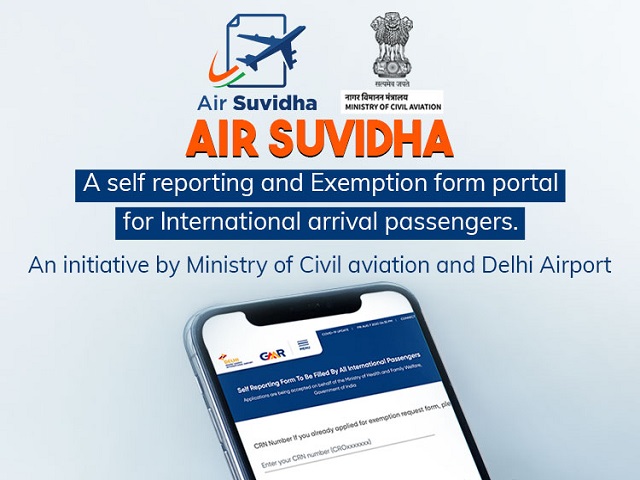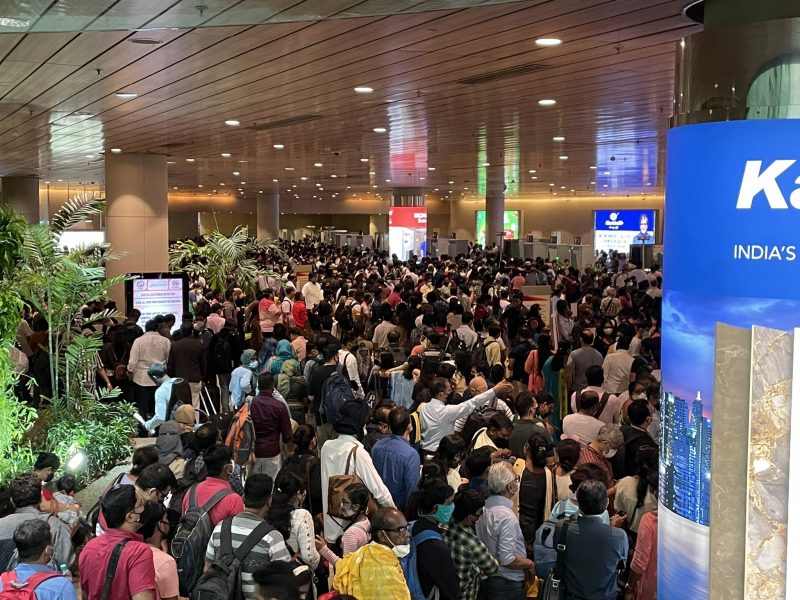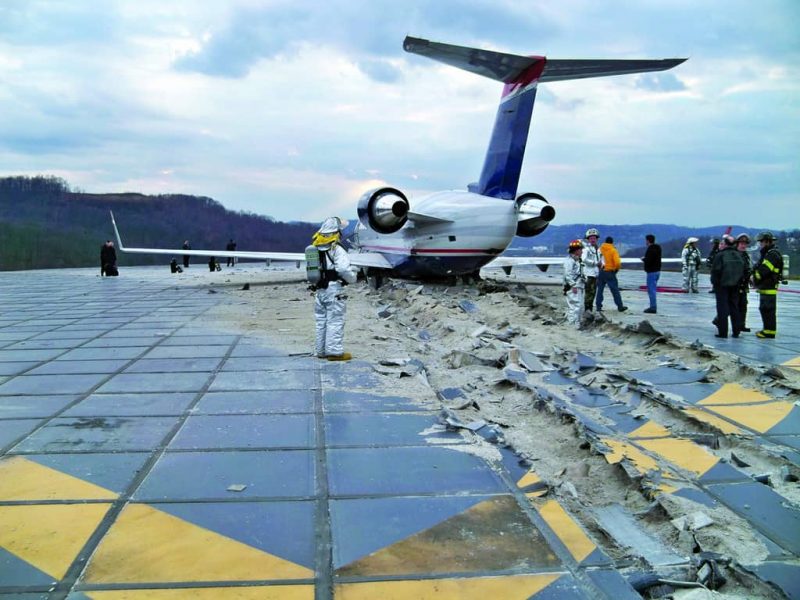A Patna-bound Go First (previously GoAir) flight from Bengaluru with 139 passengers on board made an emergency landing at Nagpur airport on Saturday, November 27 after suffering a glitch in one of the engines an official said.
The flight made a safe landing at the airport at 11:15 AM, the official said.
"The pilot of the GoAir flight contacted Nagpur ATC to inform that one of the engines of the plane is facing a problem, and made a request for an emergency landing at Nagpur airport.There were 139 passengers on board apart from the crew members.We made all requisite arrangements by declaring it as full-scale emergency, which includes making available runways, fire tenders, doctors, ambulances and requires coordination with the police. Fortunately, the flight made a safe landing."Abid Ruhi, Director, Nagpur Airport
Sources in MIL said the ATC was reported by the pilot that engine number 2 of the plane had caught fire. The fire was under control and the engine was shut down and an emergency landing was made at the airport here.
A GO-Air spokesperson, however, denied any fire being reported in the engine at all. There have been issues with the Pratt and Whitney engines since its induction though this case has been reported after a long gap, said sources.
(Image Courtesy - The Tribune)
Mihan India Limited (MIL) the airport operator at Nagpur had geared up to face a full-scale emergency keeping ambulances and fire tenders ready to face any eventuality.
The plane had 139 passengers apart from the crew. All the passengers are safe and have been shifted to another aircraft. Two of them have reported having suffered minor injuries.
A press release by GO First says the flight from Bengaluru to Patna was diverted to Nagpur after a faulty engine warning was received in the cockpit.
This initiated the captain to shut down the engine as a precautionary measure. Following the standard operating procedure, the plane was landed at Nagpur airport.
All the passengers have been deplaned and served refreshments. Alternate aircraft has been arranged at 4:45 PM.
There were two cases of minor injuries said Dr Mohammed Ithesham of Kingsway Hospitals whose ambulance is deployed at the airport to meet emergency cases.
Read next
As airports across the country report congestion and long queues amid a surge in passenger traffic, aviation minister Jyotiraditya Scindia has asked the government and private airport operators to work on decongesting these airports to mitigate passenger inconvenience.
"The airports have been asked to look at three main issues - infrastructure, workforce and flight timings - to ensure that flights are not bunched together, causing a delay at security and other areas inside the terminal. Airports need to come up with solutions for these," said a senior government official, who did not wish to be identified.
The official said the matter is being monitored by Scindia, who has formed a team of senior officers to solve the congestion issue.
The government has prepared a list of 15 airports, including those in Delhi, Mumbai, Pune and regional airports under the UDAN scheme like the one in Darbhanga, said government officials.
Suggestions that are being discussed include a change in flight timings to avoid bunching of flights and keeping airports, which do not operate round the clock, open for a longer duration.
"There are certain airports that have watch hours - operate only for a certain duration of time during the day - and suggestions are to keep the airport open for a longer duration if required," said one of the officials, who did not wish to be identified.
(Image Courtesy - Quartz)
Passengers at airports in India have been consistently increasing since the start of the festive season and got a boost after the current minister Scindia waived the restriction on the number of domestic flights that were imposed after the Covid-19 outbreak.
Before the pandemic impacted travel, Indian airlines carried a peak of about 420,000 domestic passengers a day, and passenger numbers have recovered to about 400,000 passengers a day.
On Saturday, November 27, airlines carried about 389,000 domestic passengers.
Mumbai Airport (Image Courtesy - The Times of India)
However, airline and airport executives say that decongestion is easier said than done, as airports are operating under the Covid-19 protocol, which tends to impact efficiency.
"There are social distancing norms to be followed at airports, and those norms need to stay. Unless we relax that a little, which is unlikely, some congestion will be there. Also, congestion is not at all times of the day but at certain hours that are peak hours," said an executive.
Another executive said the idea of changing flight timings is not a good idea.
(With Inputs from The Economic Times)
Read next
Bloody Mary | Champagne - how does popping a bottle at 30,000 ft lead to increased revenue for airlines?
Prashant-prabhakar
28 Nov 2021

One Mile at a Time
Everyone loves the idea of popping a fancy bottle of champagne while jetting from one business destination to the other. Very few seldom know that is also a key revenue driver for airlines, and rightly so.
Wine and airline economics are closely related as we will soon see. And it is interesting too.
Frequent flyers and globe-trotters have and will often come across " Business Traveller"- a magazine popular at a majority of airport lounges worldwide.
"Cellars in the Sky" is an award presented by the magazine to airlines that serve the best business and first-class wines on their flights.
Qatar Airways scooped gold medals for Best First Class Red, Best First Class Cellar, Best Business Class Red and Best Business Class Fortified / Dessert Wine, as well as bagged the top award for Best Overall Cellar (2020) | Business Traveller
About 50% of business class passengers consider catering before choosing airlines and this is a testimony to the fact that wine has indeed, become an indispensable part of every traveller's itinerary.
In addition to providing a classic flying experience, fine dining is one area where airlines can get creative and competitive.
Since wine is already an integral part of the menu, it can be combined with various menus to provide a perfect combination, if not the best, which would further enhance the overall dining experience.Tastes can vary at different altitudes and hence this is where airlines can twerk and play to find appropriate food combos that would work well with the guests.
Also, this is where truly great airlines service developers can have their products stand out.
The Airbus A380 lounge
One of the major features synonymous with the "Queen of the skies" is its onboard lounge which exudes unparalleled class and grace.
Emirates A380 bar | Bloomberg
It is also equipped with a horseshoe bar which is accessible to first-class and business passengers alike.
How does it translate to monetary benefits for the airline? This is how..
Suppose an airlines' wine and dine is appreciated by a white-collar from a large corporate, chances are he/she will choose to fly with the airline again and perhaps, might even book 100 or 1000 seats a year. And it won't be the first time such instances have taken place.
Turning left for less
When was the last time you earned or burnt frequent flyer points based on wine?
British Airways and Virgin Atlantic run an exclusive wine club where guests get to do just that. Talk about loyalty!
In both cases, airlines have partnered with co-vendors who ship the product and buy the points from the wine club. The wine club (owned by the airline) then sells the points to the wine merchant when the member uses cash and buys the wine when the member uses points. Margin resulting from both directions is what generates profits for the wine club.
Thus, it gets people coming back to the airline thereby increasing sales, reducing seat spoilage and growing customer lifetime value in addition to generating a small profit on the wine transaction itself.
COVER: Fodors Travel Guide
Read next
Although technological advancements have improved the way safety manoeuvres are carried out, runway overrun remains one of the most probable ones when it comes to runway excursion events.
And growing traffic is only touted to increase it further.
What can be done to successfully arrest landing overrun or perhaps, mitigate it to a safe level?
Engineered Materials Arresting System (EMAS)
Engineered Materials Arresting System (EMAS) is one such mitigation strategy that can be deployed to possibly dampen the aftermath of such runway excursions. Let's take a look
An EMAS, or an arrester bed, which is typically built at the end of a runway, uses specially engineered materials, defined specifically by the FAA. These materials are high energy absorbing materials of selected strength, which will reliably and predictably crush under the weight of an aircraft.
How does this help with mitigating post landing excursion effects?
The speeding aircraft lands on the runway and crushes the EMAS material along the way. The loss of energy required to do so, in turn, slows the aircraft, thereby arresting its movement.
Runway Safe
It is to be noted that the basic purpose of EMAS is to stop an aircraft overrun with zero human injuries and minimal aircraft damage.
The FAA Advisory Circular 150/5220-22B however, states that EMAS may not be particularly effective for incidents involving aircraft of fewer than 11,000 kilograms weight.
Furthermore, it also states that an EMAS is not to be confused for a stop way, both of which are different in their aspects.
The first EMAS was developed in the mid-1990s by ESCO/Engineered Arresting Systems Corp. (later Zodiac Arresting System. These were made of blocks of lightweight, crushable cellular concrete material, encased in jet blast resistant protection, designed to safely stop airplanes that overshoot runways.
EMAS bed with side steps to facilitate Airport Rescue and Firefighting (ARFF) | Wikipedia
Runway Safe AB, a Sweden based firm, manufactured EMAS material out of foamed silica bed made from recycled glass contained within a high-strength plastic mesh system anchored to the pavement at the end of the runway. All the materials used have to be technically accepted by the FAA or have to meet FAA Advisory Circular.
As of May 2017, the International Civil Aviation Organization (ICAO) has been working on developing a harmonized regulation regarding arresting systems.
EMAS is generally deployed in areas where the full RSA cannot be obtained. RSA- runway safety area is a graded area, typically 500 feet wide and extends 1,000 feet beyond each end of the runway. At times, it might not be practically possible to achieve full standard RSA due to the presence of obstacles like water bodies, highways, railroads, and populated areas or severe drop-off of terrain.
A standard EMAS installation can stop an aircraft from overrunning the runway at approximately 80 miles per hour.The tires of the aircraft sink into the lightweight material and the aircraft is decelerated as it rolls through the material.EMAS can be of significant use in table-top runways, where landing during critical situation(s) can be extremely daunting.
A report from MoneyControl had earlier highlighted how the fatal accidents in Mangalore and Kozhikode could have been possibly averted (in 2010 and 2020 respectively), had there been a use of EMAS.
Kozhikode airport is equipped with a Runway End Safety Area (RESA) as per ICAO guidelines on safety. Engineered Material Arrestor System (EMAS) provides safety benefit if less than standard RESA length is available or at Airports where RESA cannot be provided due to constraintsThe then Indian Civil Aviation Minister Hardeep Singh Puri said
Tabletop runway at Kozhikode airport
Reportedly, exorbitant rates as high as Rs 100 crores and the fact that it would have to be completely replaced after every runway overrun are some of the factors that act as deterrents.
While it might appear that provision of EMAS is not mandatory in a civil aerodrome as per ICAO guidelines, countries like US, Spain, France and Germany do have it. China and Saudi Arabia are some of the countries from Asia and the middle east with EMAS installed.
https://www.youtube.com/watch?v=0U_bZVNIy_s
Engineered Materials Arresting System EMAS by ESCO2 | Youtube
COVER: Airport CEO Forum
Read next
HC asks centre and DGCA to respond to a request to eliminate Covid-19 self-declaration form
Radhika Bansal
26 Nov 2021

The Delhi High Court on Thursday, November 25 sought response of the Centre and aviation body DGCA on a plea seeking to do away with the mandatory online self-declaration form, provided under the Air Suvidha App, which has to be filled up by the passengers before boarding a flight that they are COVID-19 negative.
A bench of Chief Justice DN Patel and Jyoti Singh issued notice to the Ministry of Aviation, Directorate General of Civil Aviation (DGCA), and Air India Ltd on the petition which said the self-declaration form requires knowledge of technology and a smartphone along with the seat number which is not there with many passengers.
The court listed the matter for further hearing on December 23.
The petition by Sumita Kapil, a practising advocate, sought direction from the authorities to do away with/scrap with the self-declaration form provided under the Air Suvidha App.
The petition, filed through advocate Shaan Mohan, gave instances of various passengers who were not able to board the flight from abroad to India as they were unable to fill their forms on smartphones and submit them online before boarding the plane despite having tickets and negative RT-PCR test reports.
Thereafter, the passengers had to get their forms filled by the travel agent and book another flight due to which they suffered a huge loss, it said.
"The self-declaration form has to be given declaring that the passenger is corona negative which is evident in the RT-PCR test report which has to be produced before checking in at the airports and that report also has the passport number on it then why a form carrying pictures of passport and Covid test report have to be produced at the counter and submitted online when the physical copies can very well be tracked and posted to the concerned authorities."The plea
(With Inputs from PTI)
Read next
INR 90,000 crore investment in the airports' sector expected over next five years
Radhika Bansal
26 Nov 2021
The country’s airports sector is expected to see an investment of INR 90,000 crore in five years, with nearly INR 68,000 crore coming from the private players, a senior official said on Wednesday, November 24.
The civil aviation sector, which was battered by the coronavirus pandemic that had also resulted in the suspension of domestic and international flight services, is slowly on the recovery path and the daily domestic air traffic is nearing the pre-COVID level of 4 lakh.
Civil Aviation Secretary Rajiv Bansal said investments totalling INR 90,000 crore will be made for airports over the five years, starting 2020-21.
Out of the total amount, around INR 20,000-22,000 crore will be invested by the Airports Authority of India (AAI), while the remaining amount of about INR 68,000 crore would be from the private sector.
The government expects to have 220 operational airports over five years and will include heliports. Currently, there are 136 operational airports in the country, and many aerodromes are in the works.
Prime Minister Narendra Modi laid the foundation stone for the new airport Noida International Airport at Jewar in Uttar Pradesh on Thursday, November 25.
Among others, a new airport at Mopa in Goa is expected to be ready next year, and an aerodrome is also coming up at Navi Mumbai in Maharashtra.
Besides, expansion works have been taken up at Delhi, Bangalore and Hyderabad airports.
The civil aviation secretary also informed that international flights are expected to return to normal by the end of the year. “Normalisation of international operations is expected to resume by the end of the calendar year,” Bansal said.
The aviation sector was one of the worst-hit sectors by the coronavirus pandemic as international passenger flights to and from India had to be suspended in March 2020 to curb the spread of the disease.




Comment